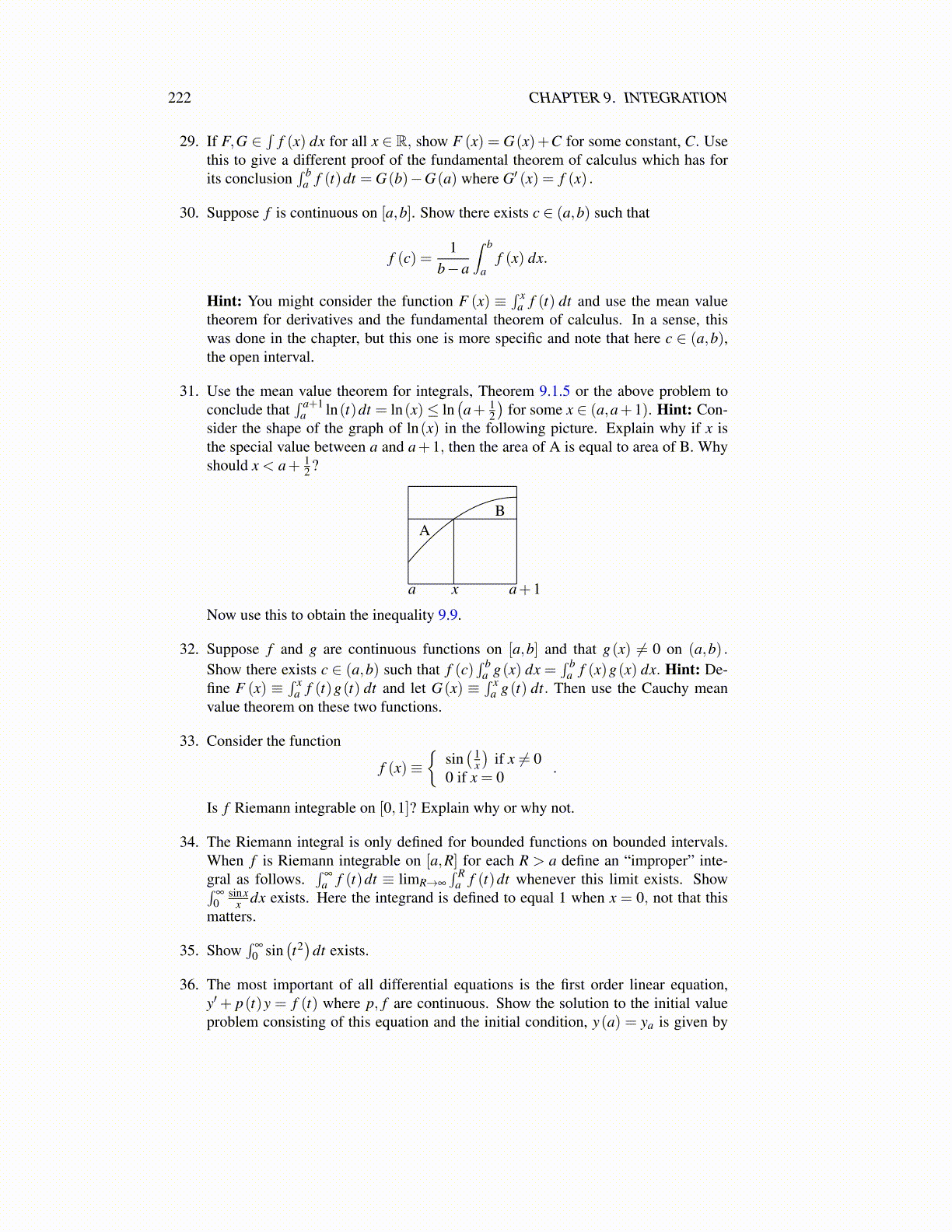
222 CHAPTER 9. INTEGRATION
40. In the above Taylor’s formula, use Problem 32 on Page 220 to obtain the existenceof some z between x0 and x such that
f (x) = f (x0)+n
∑k=1
f (k) (x0)
k!(x− x0)
k +f (n+1) (z)(n+1)!
(x− x0)n+1 .
Hint: You might consider two cases, the case when x > x0 and the case when x < x0.
41. There is a general procedure for constructing methods of approximate integrationlike the trapezoid rule and Simpson’s rule. Consider [0,1] and divide this intervalinto n pieces using a uniform partition, {x0, · · · ,xn} where xi− xi−1 = 1/n for eachi. The approximate integration scheme for a function f , will be of the form(
1n
) n
∑i=0
ci fi ≈∫ 1
0f (x) dx
where fi = f (xi) and the constants, ci are chosen in such a way that the above sumgives the exact answer for
∫ 10 f (x) dx where f (x) = 1,x,x2, · · · ,xn. When this has
been done, change variables to write∫ b
af (y) dy = (b−a)
∫ 1
0f (a+(b−a)x) dx
≈ b−an
n
∑i=1
ci f(
a+(b−a)(
in
))=
b−an
n
∑i=1
ci fi
where fi = f(a+(b−a)
( in
)). Consider the case where n = 1. It is necessary to find
constants c0 and c1 such that
c0 + c1 = 1 =∫ 1
01dx, 0c0 + c1 = 1/2 =
∫ 1
0xdx.
Show that c0 = c1 = 1/2, and that this yields the trapezoid rule. Next take n = 2 andshow the above procedure yields Simpson’s rule. Show also that if this integrationscheme is applied to any polynomial of degree 3 the result will be exact. That is,
12
(13
f0 +43
f1 +13
f2
)=∫ 1
0f (x) dx
whenever f (x) is a polynomial of degree three. Show that if fi are the values of f ata, a+b
2 , and b with f1 = f( a+b
2
), it follows that the above formula gives
∫ ba f (x) dx
exactly whenever f is a polynomial of degree three. Obtain an integration schemefor n = 3.
42. Let f have four continuous derivatives on [xi−1,xi+1] where xi+1 = xi−1 + 2h andxi = xi−1 + h. Show using Problem 40, there exists a polynomial of degree three,p3 (x) , such that
f (x) = p3 (x)+14!
f (4) (ξ )(x− xi)4
Now use Problem 41 and Problem 38 to conclude∣∣∣∣∫ xi+1
xi−1
f (x) dx−(
h fi−1
3+
h fi43
+h fi+1
3
)∣∣∣∣< M4!
2h5
5,